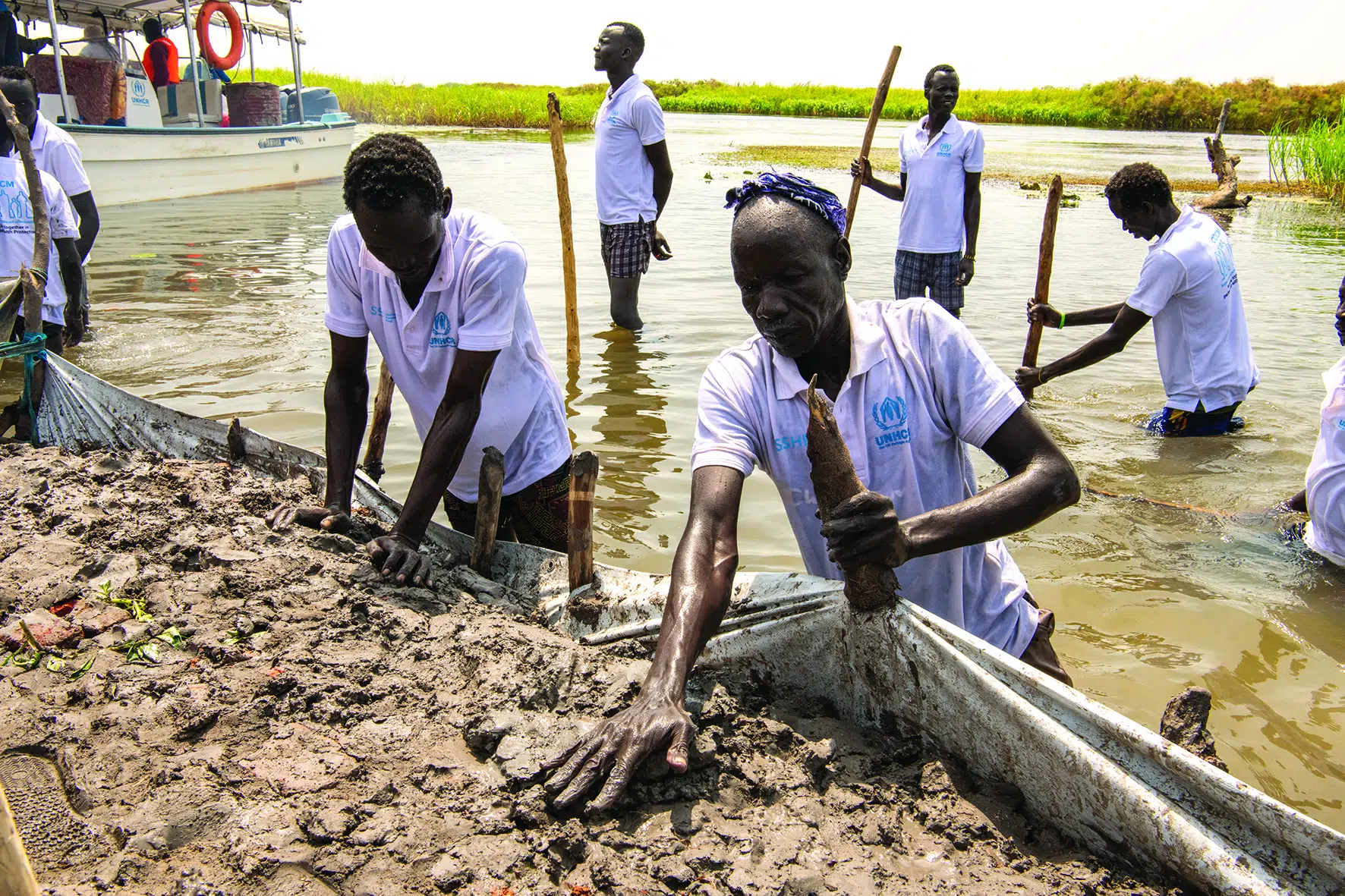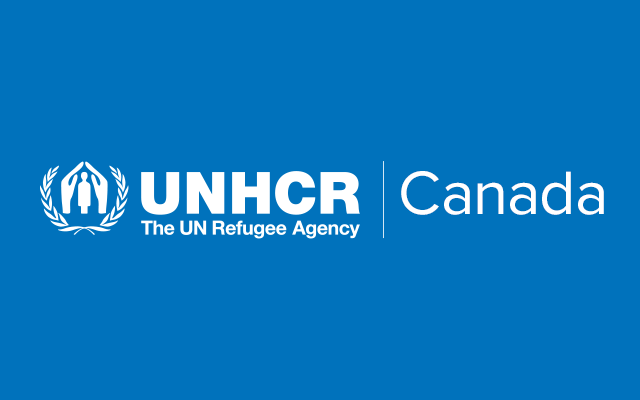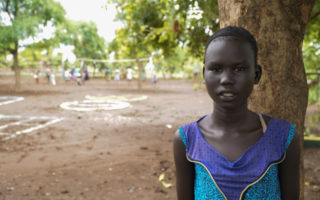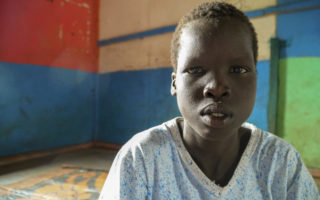Violence, food insecurity, flooding uproot millions in South Sudan

Members of the Old Fangak Dyke Committee reinforce a communal dyke damaged by flooding in South Sudan.
South Sudan emerged from decades of violence and strife to gain its independence. But in the 11 years that have followed, there has been more war than peace in the world’s youngest nation.
Hard-won gains made since achieving independence on July 9, 2011, were undone when brutal conflict broke out in South Sudan in late 2013. What followed was a vicious cycle of intercommunal conflict and a dire humanitarian situation.
Despite efforts towards implementing a peace agreement, South Sudan continues to grapple with sporadic violence, chronic food insecurity and the impact of major flooding and climate events, uprooting millions of people. As the protracted emergency wears on, it remains the largest refugee crisis on the African continent. Children make up over 65 per cent of South Sudan’s refugee population, with two out of three under the age of 18.
UNHCR joined with 102 humanitarian and development partners earlier this year to appeal for $1.5 billion to deliver much-needed humanitarian assistance and protection to the 1.6 million people internally displaced within South Sudan, as well as 2.3 million South Sudanese refugees and local communities in five main asylum countries: the Democratic Republic of the Congo, Ethiopia, Kenya, Sudan, and Uganda.
In the face of a multitude of challenges, climate-change driven flooding is having a particularly devastating impact on people in South Sudan — worsening an already fragile situation.
Angelina Peter walks home with a bunch of firewood in Malakal, South Sudan. Angelina and her family were displaced by floods and travelled on a makeshift boat from Old Fangak to Malakal. At the site for internally displaced people (IDPs), Angelina sells firewood to fellow IDPs and locals to make ends meet.
“The biggest challenge here now is hunger. I sell firewood to feed my children. If I fail to sell, my children don’t eat. There is no soap, no food, there is nothing at all.”
In March 2022, Andrew Harper, UNHCR’s Special Advisor on Climate Action, visited flood affected areas of South Sudan including Old Fangak and Malakal. He noted that in 2021, the country had already witnessed the worst flooding on record, adding that “such events are set to become the norm, not the exception in the future.”
“If we do not step up our support for the people of South Sudan, climate change and environmental degradation, coupled with ongoing insecurity, mean that resources will further shrink, leaving people with no means to survive.” Harper said.
___
Here are some steps UNHCR is taking in South Sudan:
- Helping to strengthen flood defenses through the formation of local dyke care and maintenance committees and providing necessary training and tools.
- Distributing early maturing and drought-resistant seed varieties, as well as supporting the introduction of irrigation systems for those hit by drought.
- Supporting displaced families in Malakal and other towns in the region.





